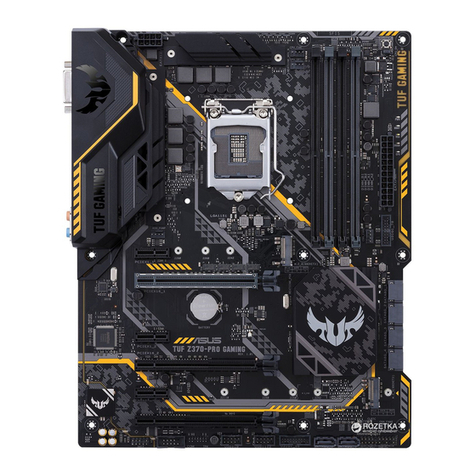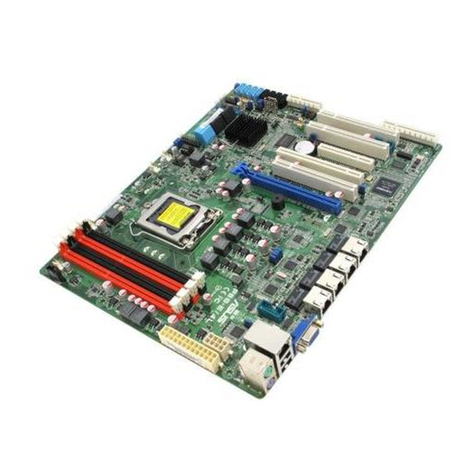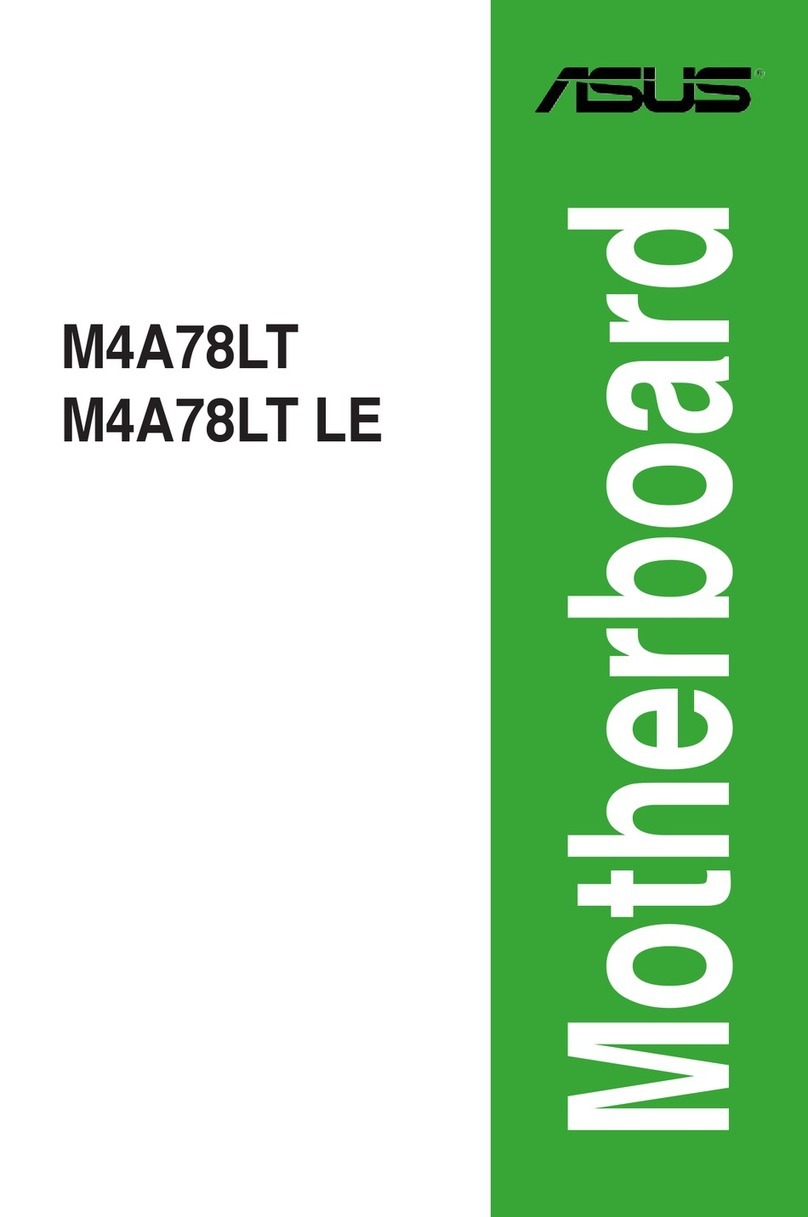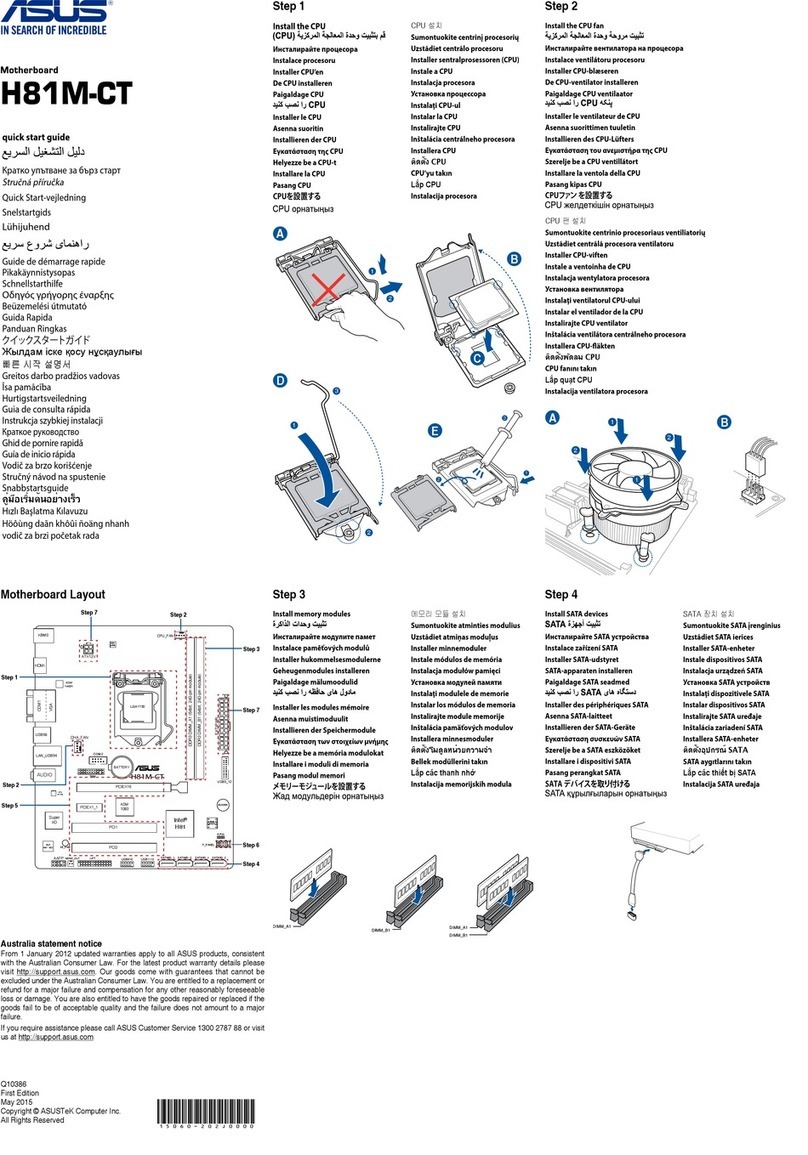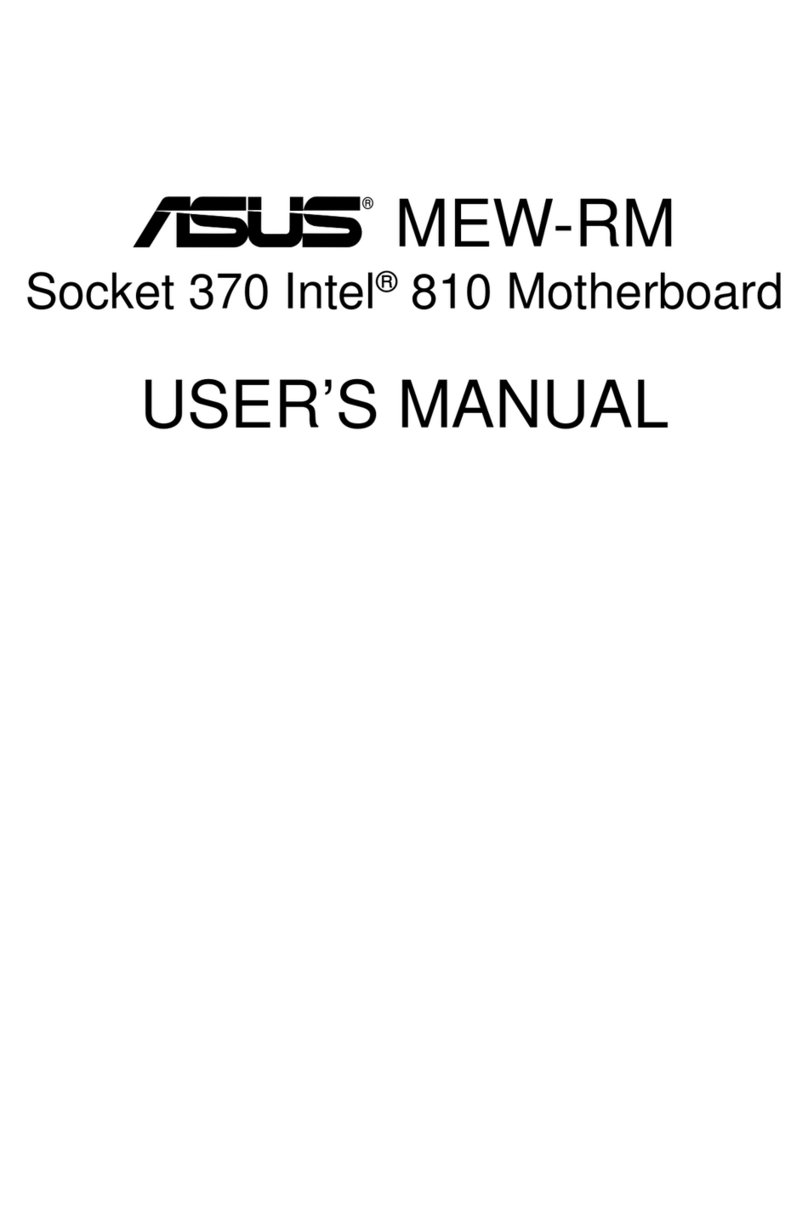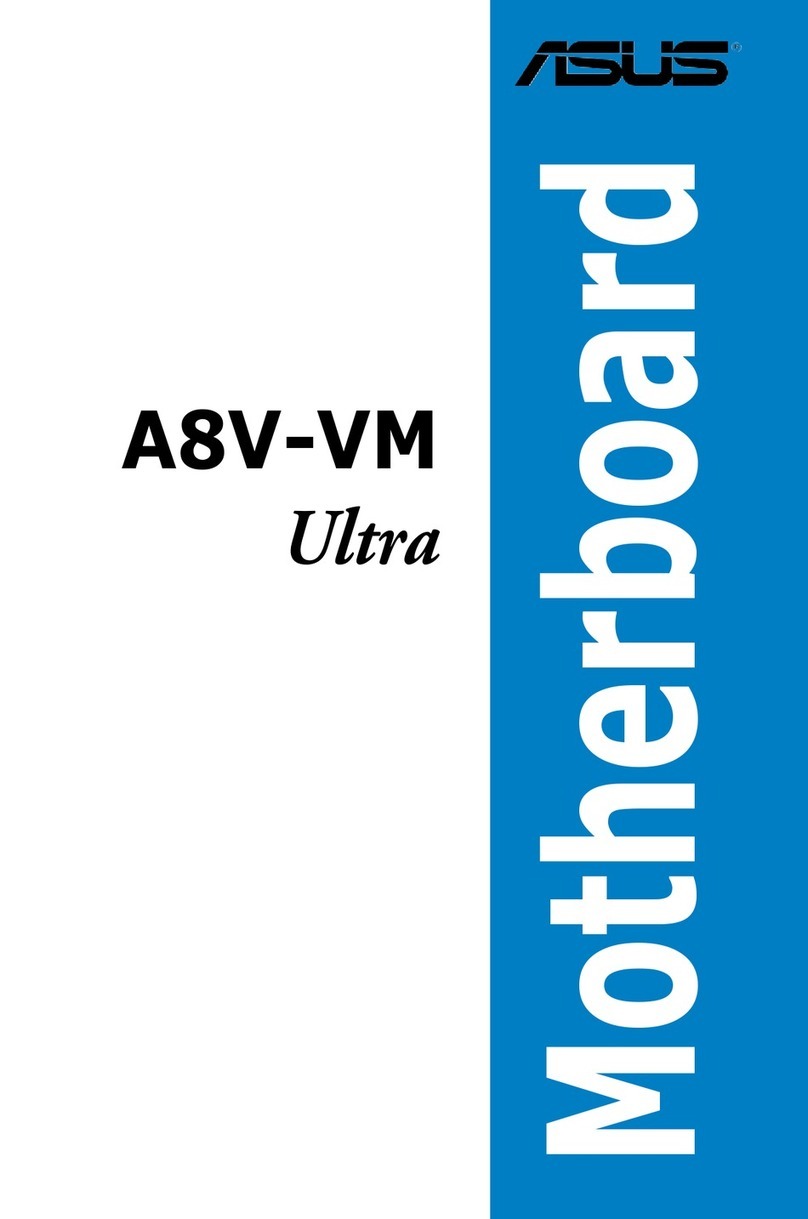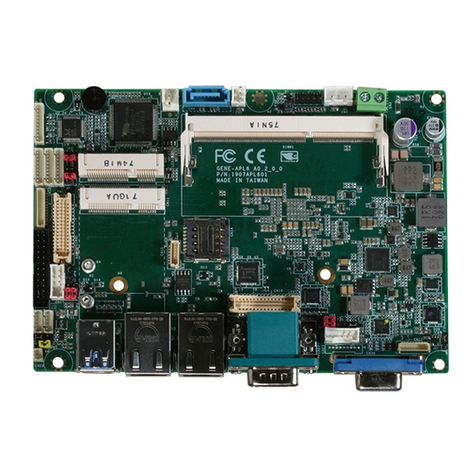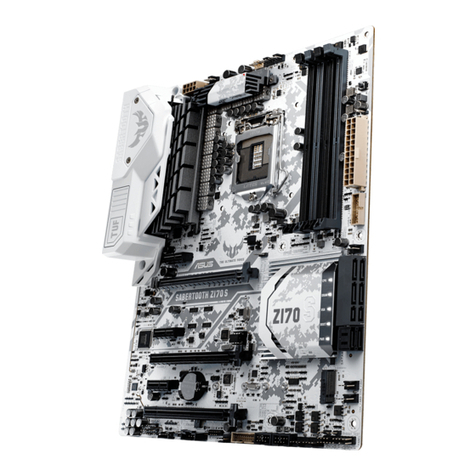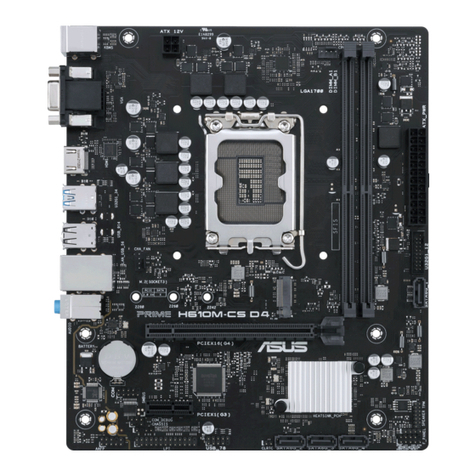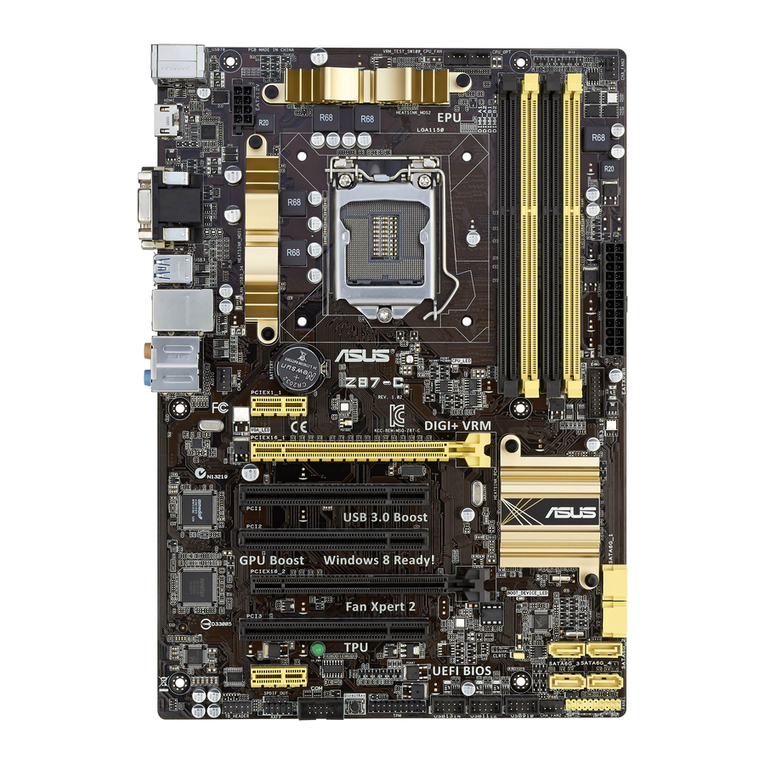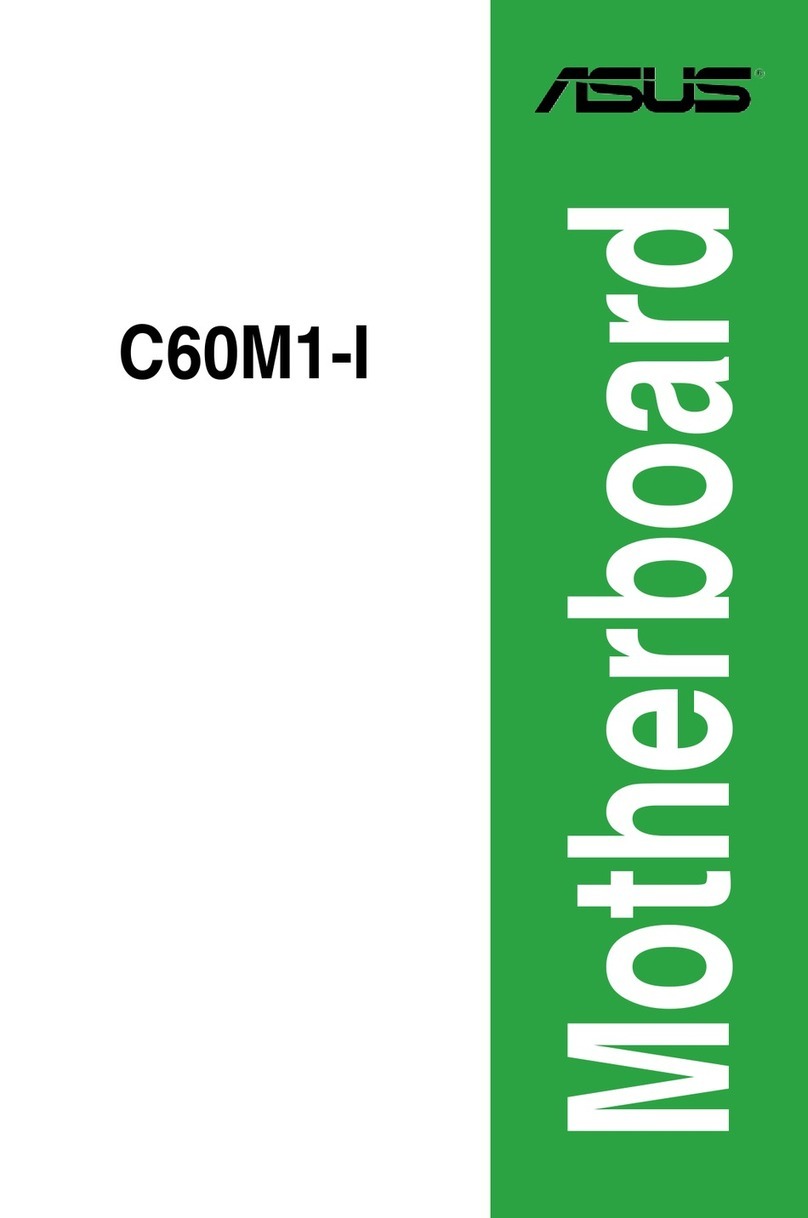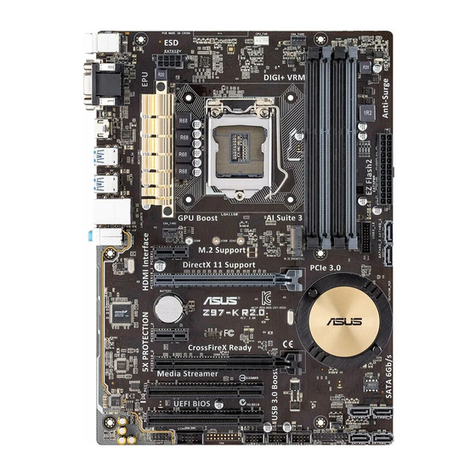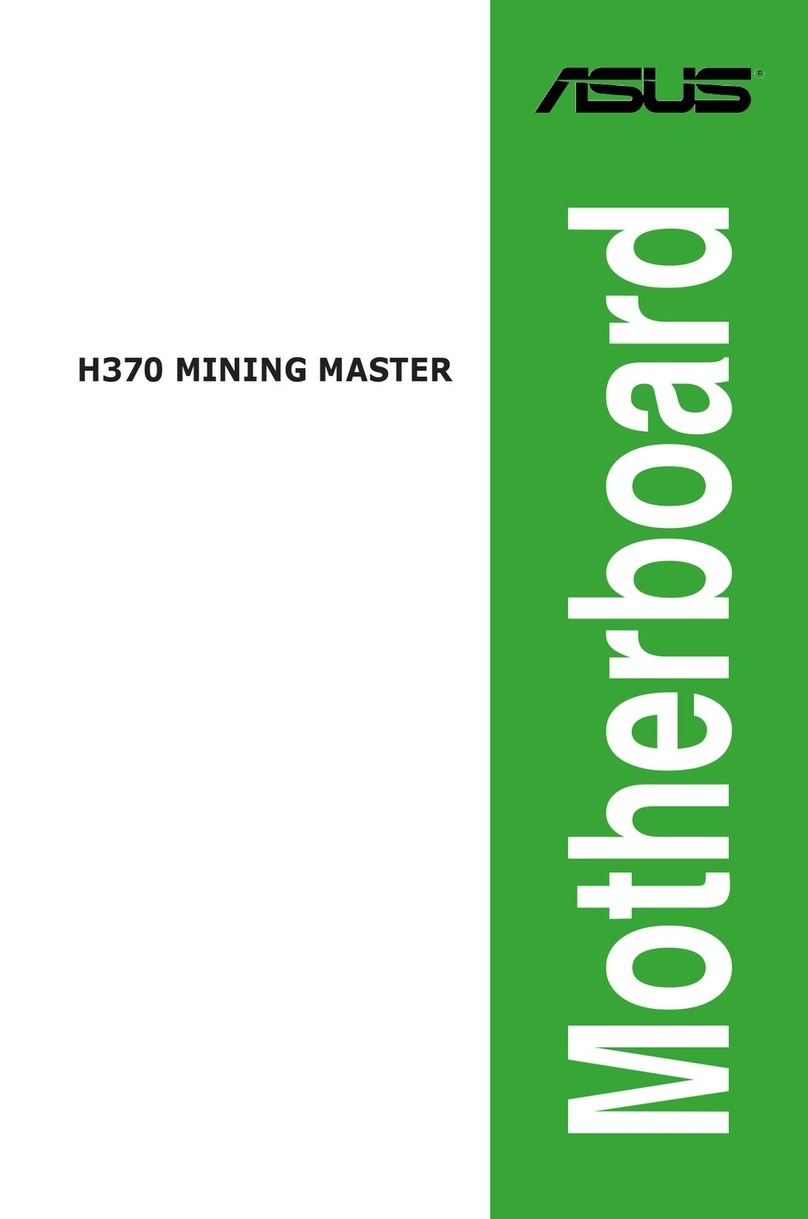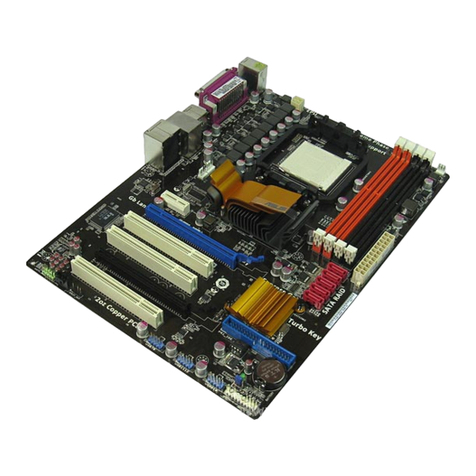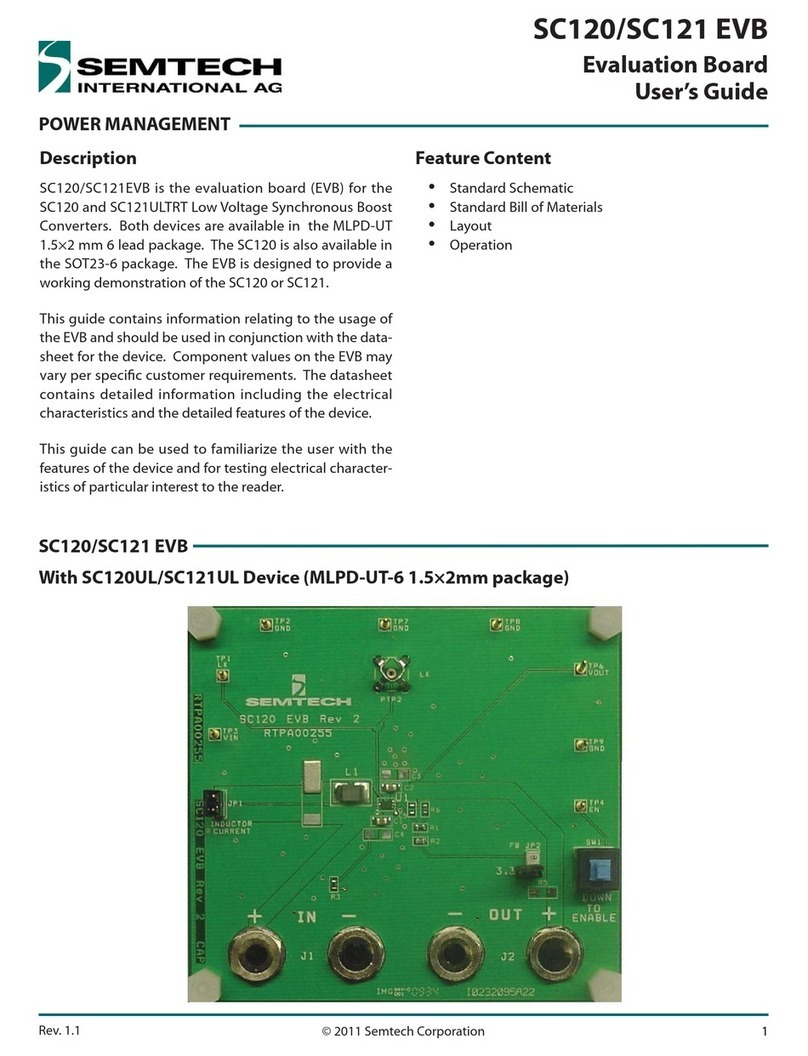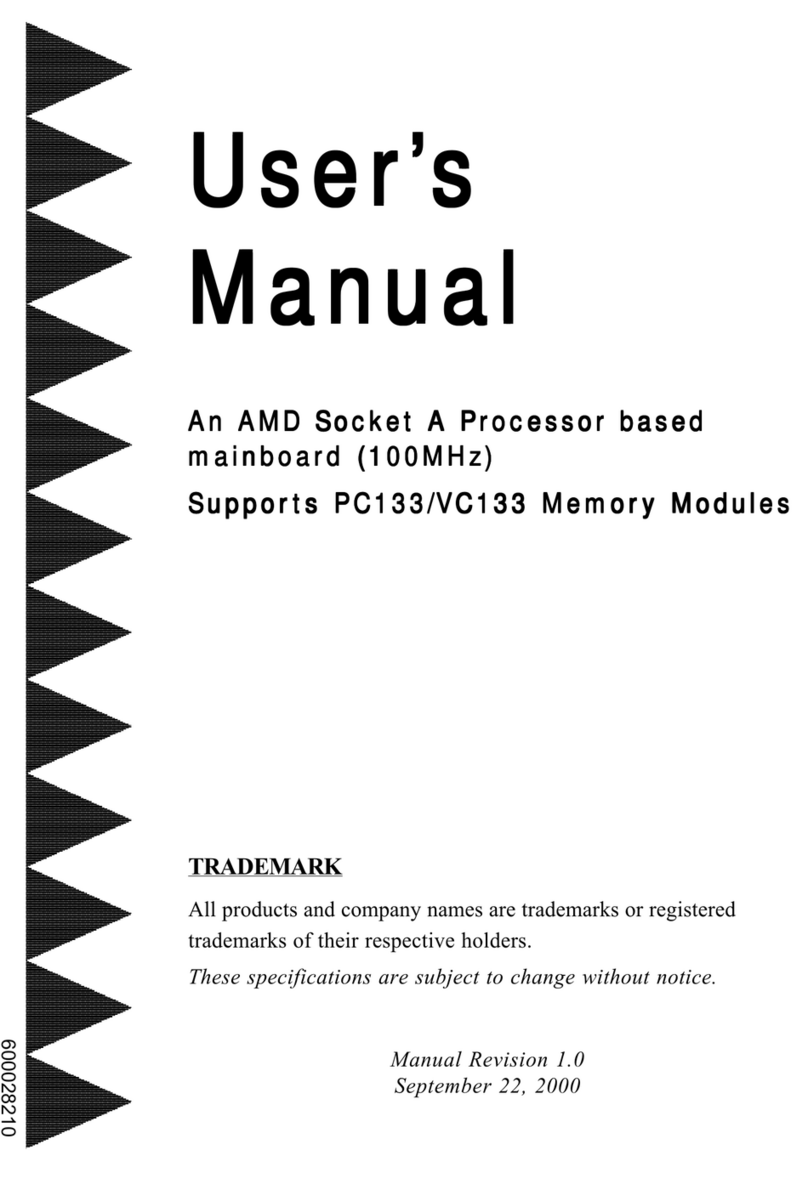
v
Contents
4.4.7 Speech Configuration .......................................... 4-25
4.4.8 Instant Music Configuration ................................. 4-26
4.5 Power menu ..................................................................... 4-27
4.5.1 Suspend Mode [Auto] .......................................... 4-27
4.5.2 Repost Video on S3 Resume [No] ....................... 4-27
4.5.3 ACPI 2.0 Support [No] ......................................... 4-27
4.5.4 ACPI APIC Support [Enabled] ............................. 4-27
4.5.5 BIOS -> AMLACPI Table [Enabled] ..................... 4-27
4.5.6 APM Configuration............................................... 4-28
4.5.7 Hardware Monitor ................................................ 4-30
4.6 Boot menu ........................................................................ 4-32
4.6.1 Boot Device Priority ............................................. 4-32
4.6.2 Boot Settings Configuration ................................. 4-33
4.6.3 Security ................................................................ 4-35
4.7 Exit menu ......................................................................... 4-38
Chapter 5: Software support
5.1 Install an operating system................................................. 5-1
5.2 Support CD information...................................................... 5-1
5.2.1 Running the support CD ........................................ 5-1
5.2.2 Drivers menu ......................................................... 5-2
5.2.3 Utilities menu ......................................................... 5-3
5.2.4 ASUS Contact Information..................................... 5-4
5.2.5 Other information ................................................... 5-5
5.3 Software information .......................................................... 5-7
5.3.1 ASUS Update ........................................................ 5-7
5.3.2 ASUS MyLogo2™.................................................. 5-8
5.3.3 ASUS PC Probe .................................................. 5-10
5.3.4 Winbond Voice Editor .......................................... 5-15
5.3.5 SoundMAX
®
4 XL software .................................. 5-19
5.3.6 ASUS Instant Music ............................................. 5-22
5.4 RAID configurations ......................................................... 5-25
5.4.1 Install the hard disks ............................................ 5-26
5.4.2 Enter the MBFastBuild™ utility ............................ 5-27
5.4.3 Creating a RAID 0 array (Performance) .............. 5-28
5.4.4 Creating a RAID 1 array (Security) ...................... 5-29
5.4.5 Other FastBuild Utility Commands....................... 5-31
5.5 3Com
®
Virtual Cable Tester™ Technology ....................... 5-33
Quick Reference Card

